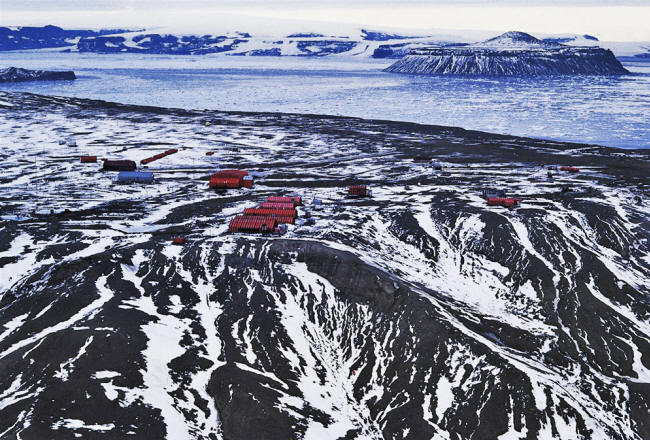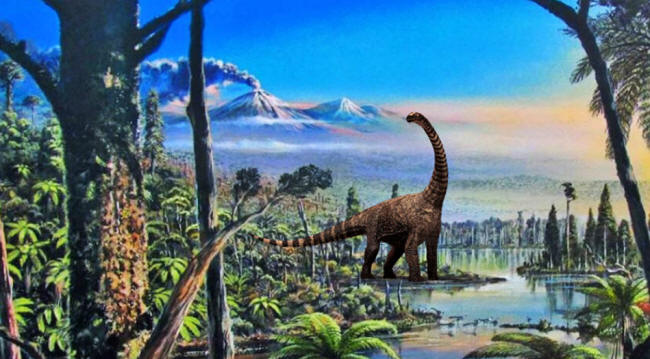|

by Reuters
April
02, 2020
from
NBCNews Website

Marambio Base in Antarctica.
De Agostini / Getty Images
The findings
suggest that
Earth's
southernmost continent
was once home to
temperate, swampy rainforests
teeming with
life.
Antarctica is now a harsh land of
ice and snow, but has not always been that way.
Earth's southernmost continent long ago was home to temperate,
swampy rainforests teeming with life, scientists said on Wednesday
based on pristinely preserved forest soil they retrieved by drilling
under the seafloor off Antarctica's coast.
The sediment core obtained by scientists working aboard the research
icebreaker
RV Polarstern in the
Amundsen Sea near the
Pine Island Glacier dated to about
90 million years ago during the Cretaceous Period when dinosaurs
were the dominant land animals.
The researchers estimated based on the soil content that this
location, 560 miles (900 km) from the South Pole, experienced
average annual temperatures of about 53-55º Fahrenheit (12-13º
Celsius) and average temperatures during the warmest summer months
of about 68-77º Fahrenheit (20-25º Celsius).
That is exceptionally warm for a location near the South Pole, where
the average annual temperature now is around minus 40º Fahrenheit
(minus 40º Celsius).
A modern temperature analogue may be New York City, according to
marine geologist Johann Klages of the Alfred Wegener
Institute's Helmholtz Center for Polar and Marine Research in
Germany, lead author of the research (Temperate
Rainforests near the South Pole during Peak Cretaceous Warmth)
published in the journal Nature.
The dark-brownish gray soil was composed of fine-grained silt and
clay bearing remains of fossil roots in a dense network, pollen and
spores spanning 65 types of plants, with individual cell structures
clearly visible.
"If you would go to a
forest near you and drill a hole, it would probably look pretty
similar," Klages said.
Klages said the plants
included conifers, ferns and flowering plants.
While they did not find
any animal remains, Klages said there likely were,
dinosaurs, flying
reptiles called pterosaurs and many insects...
Dinosaur fossils from
Antarctica have been known for years.

The soil came from nearly 90 feet (27 meters) beneath the seafloor
under ocean depths of about 3,300 feet (1,000 meters). It was
obtained using a
seafloor drill rig.
The research underscores the dramatic
climate changes Earth has undergone
in the past - and is currently undergoing today.
The soil core sample dated from 93-83 million years ago, Klages
said. This dates from the planet's warmest period of the past
140 million years, with sea levels about 560 feet (170 meters)
higher than today.
The rainforest environment is all the more remarkable, the
researchers said, considering that the region annually experiences a
four-month polar night when there is no sunlight to nurture plant
life.
Klages said no ice sheets
were present at the time though seasonal snow fall was likely.
|



